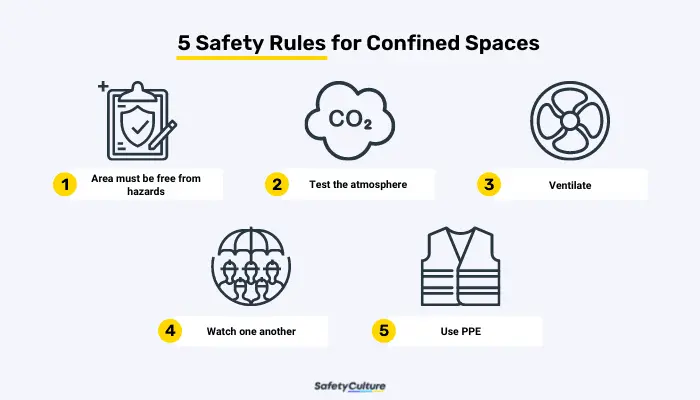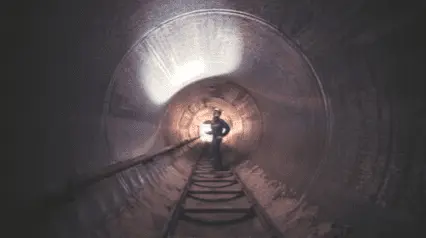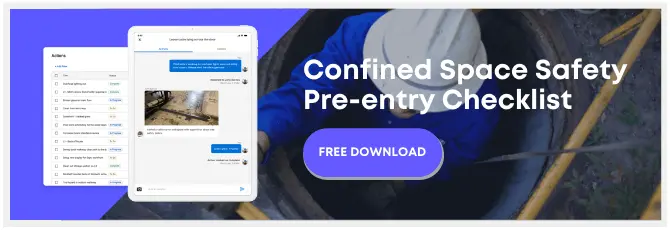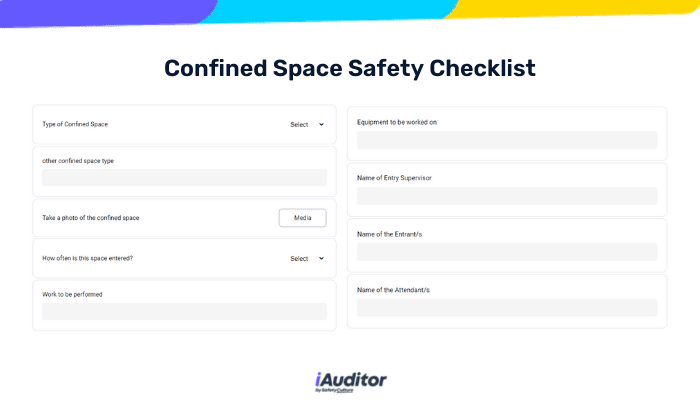What is a Confined Space?
A confined space is a space with limited or restricted entry and exit points. Usually these spaces contain a hazardous atmosphere. Which is why these types of spaces should only be accessed by trained professionals. Some examples of these are manholes, tunnels, pipelines, vessels, tanks, etc.
Below are some general safety rules to help you stay safe in confined spaces:

1. Area must be free from hazards
Prior to entering any confined spaces, it is imperative that a risk assessment is carried out by a competent person to determine if a confined space is free of harmful materials and substances. This will help in determining whether a confined space is safe to enter or requires additional precautionary measures.
2. Test the atmosphere
An evaluation testing is performed to determine any presence of chemical hazards in the confined space’s atmosphere and to identify what steps to take and conditions need to be met to qualify as safe to enter. A trained worker must conduct a series of atmosphere tests in the following order: 1) oxygen; 2) combustible gases; and 3) toxic gases and vapors. Test results should be recorded or stated on the work permit. Additionally, training can be done through a mobile training platform for easier access and learning.
3. Ventilate
Proper ventilation is crucial in a confined space. It maintains the atmosphere in a safe and acceptable level by bringing in continuous fresh air. It can also cool down temperature, and remove contaminants, all of which are beneficial in protecting workers from health hazards present in the confined space. Mechanical ventilation such as fans and blowers should be used. A warning system should be in place to alert workers when there is a failure in the ventilation system.
4. Watch one another
When someone is working in a confined space, always ensure a workaround watch who can call rescue teams for emergencies or is capable and equipped to conduct a rescue. Atmosphere should be continuously monitored from outside of the confined space.
5. Use PPE
Use a harness, lifeline, or continuous gas monitoring devices. Also, use a self-contained breathing apparatus if needed.





